Text: Marcella van Alphen
Photographs: Claire Lessiau & Marcella van Alphen
Leaving the walled city of Siena behind, a world of golden rolling hills soon opens up. Farmers have just harvested their crops and round or rectangle wheat straw bales are drying in the sun, providing some shades to a few birds picking up whatever is left in the golden grass. Cypress trees line the long driveways leading to large terra-cotta farms. The scent of hay mixes with the sweet odour of fig trees and the golden wheat fields contrasts with the perfectly blue Tuscan summer sky. It is time for a 2-day adventure, riding a Vespa to explore the South of Siena, and more specifically the most renown wine regions of Tuscany: Brunello, Montepulciano and Orcia. Hop on!
Pin it for later:


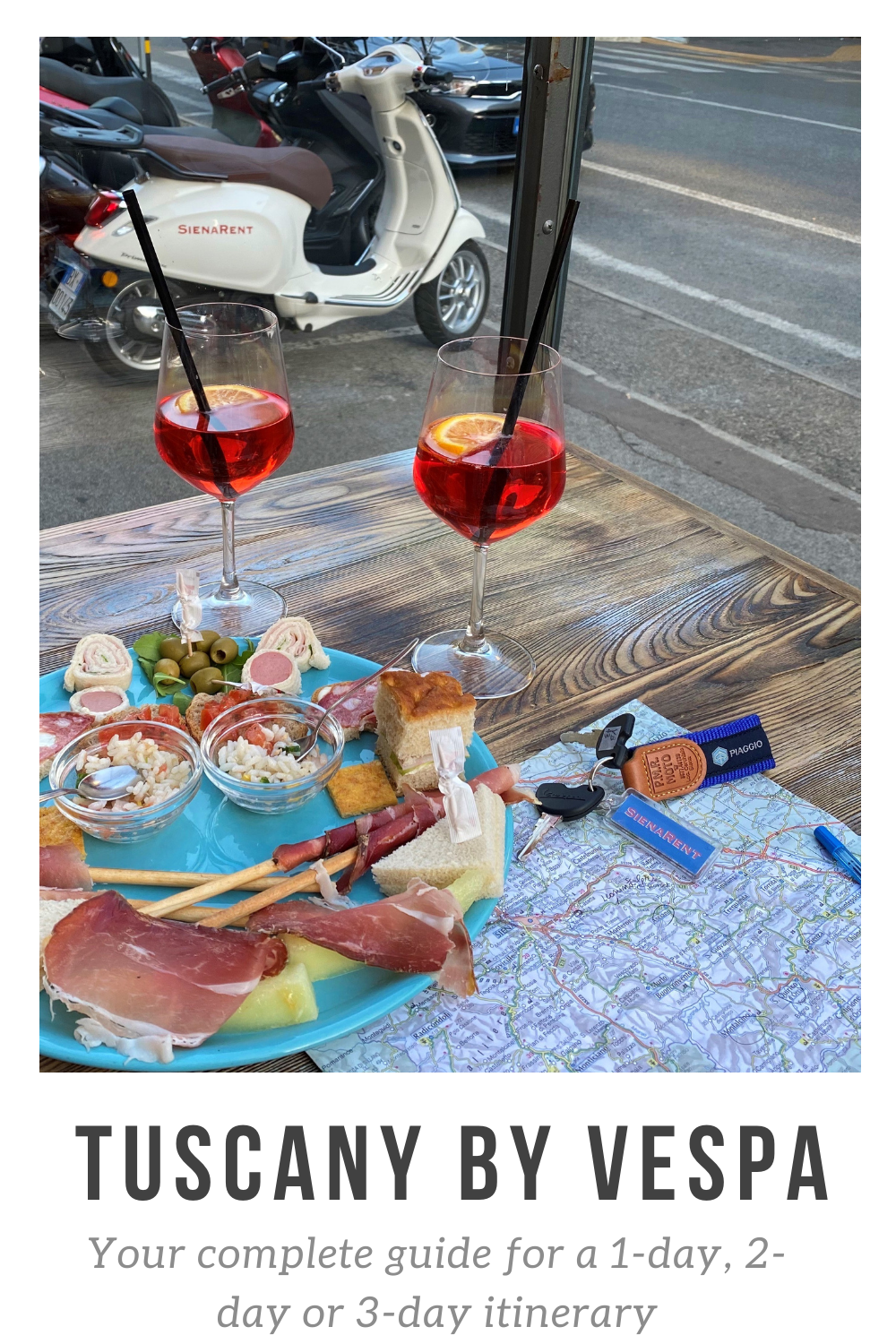
Castelmuzio: off-the-beaten path sweeping views
The winding road we follow on our Vespa scooter leads us to the hamlet of Castelmuzio, perched atop a tuff hill. Stopping the engine of the Vespa, the sound of cicadas takes over. We walk under the medieval arched stone gate of Castelmuzio to lose ourselves in a small maze of narrow alleys designed by the tall walls of the medieval houses, and reach a square with a sweeping 360° view on the undulating Tuscan landscape: patches of forests, olive groves, farms, vineyards, villages and fields where deer run through form a perfect postcard. An elderly couple arrives and sits on a bench, soaking up the beauty of the valley from underneath an old olive tree. It seems that after decades in this off-the-beaten path charming village, they are still amazed by the view, and it is easy to understand why.


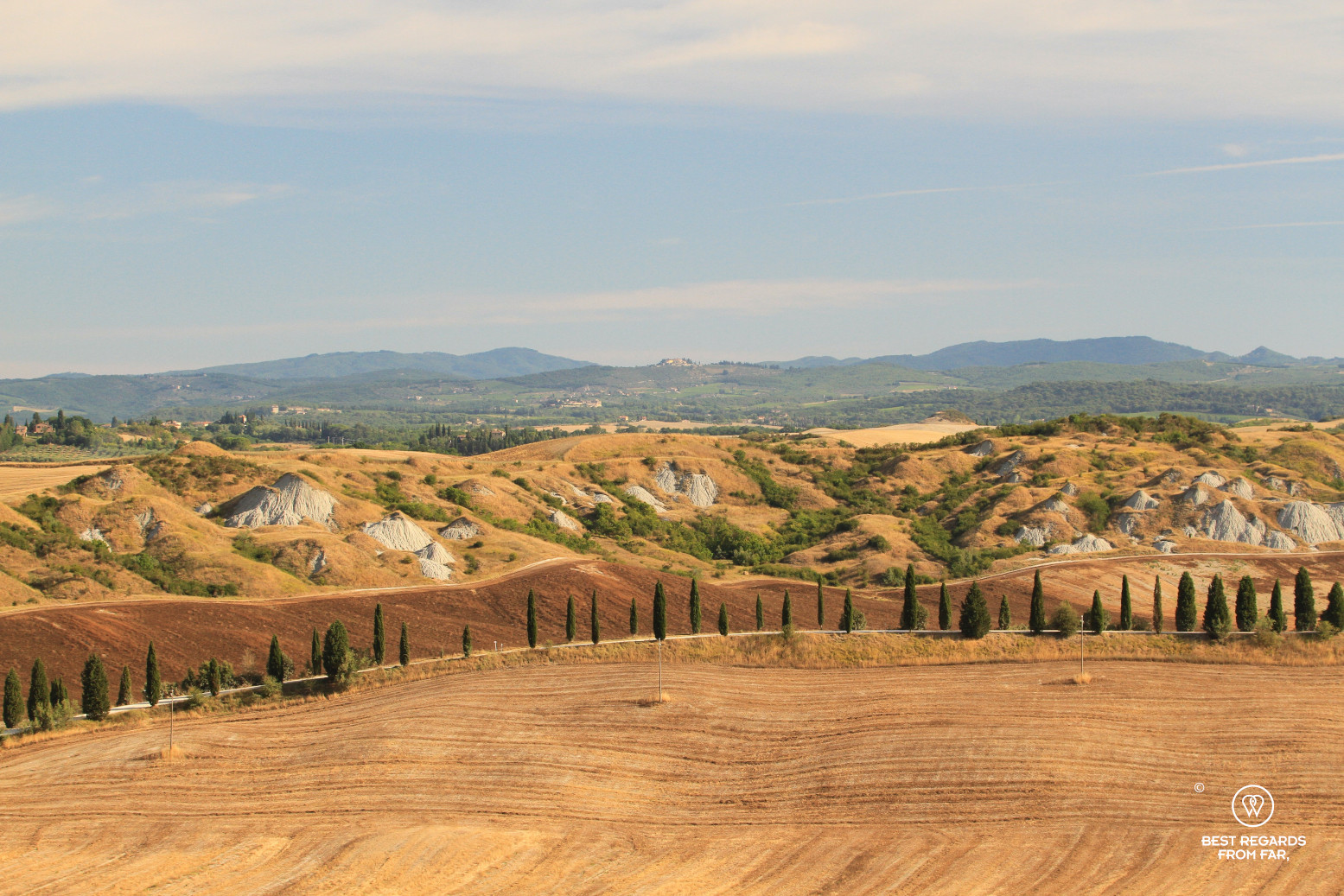

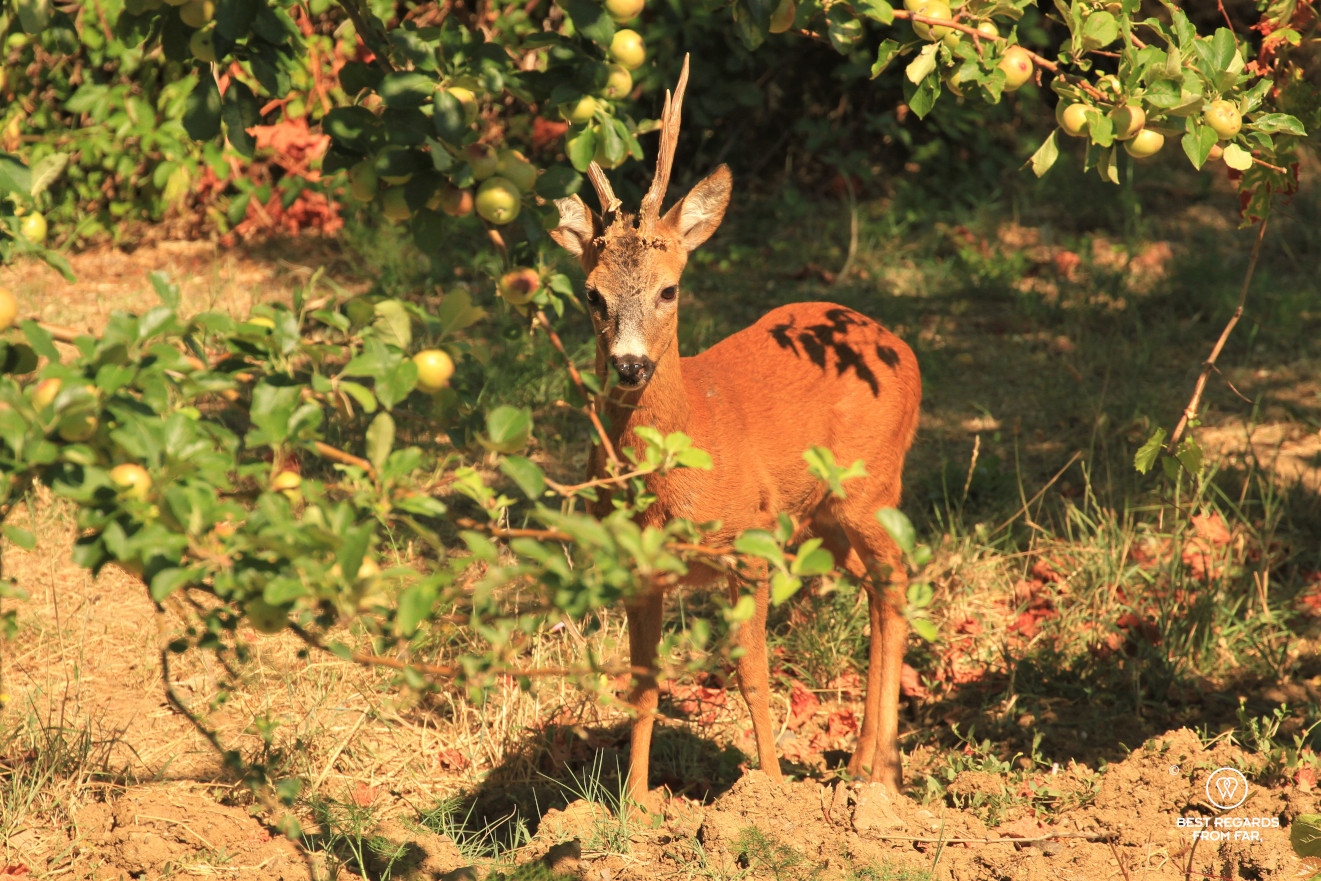
Pienza: the utopian Renaissance city
A short ride away on the quiet roads, we arrive in Pienza, also strategically located atop a hill like all medieval hamlets. Except that Pienza’s medieval past has been completely redesigned by what the locally-born Pope Pius II considered the perfect example of a Renaissance city. A humanist, in 1459, within a year of becoming pope, he rethought its urban planning to reflect the principles of the Renaissance and build his summer palace, the Palazzo Piccolomini, named after his secular name. The best example is the harmonious central square around which the cathedral dominates the Piccolomini and Borgia palaces, and the town hall, all overlooking the Val d’Orcia. It looks so much like a perfect Renaissance painting that numerous Hollywood directors chose to film in this UNESCO World Heritage Site (the Medici: Masters of Florence, the English patient or Romeo and Juliet). This ideal city has played a leading role in the later urban developments throughout Italy. Today, the Palazzo Borgia hosts the Museo Diocesano di Pienza that showcases artwork from the cathedral, paintings, sculptures and sacred furniture from the 12th to the 19th centuries, as well as the magnificent cape of Pope Pius II which he donated himself to the cathedral for its consecration in 1462. Embroidered in England in 1317 with gold, silver and multicoloured silk, it describes the life of Virgin Mary.






Before heading out, lunch at Osteria Baccus is a great option! The sympathetic Giuseppe handles the small restaurant room and his daughters and son-in-law roll the pici pasta by hand in the kitchen. The limited menu is exclusively composed of Tuscan specialties with only freshly handmade options from locally sourced ingredients. Pici are a must to try: the traditional cacio e pepe (or pecorino cheese and black pepper) and the tartufo nero fresco (fresh black truffle) are excellent choices, and are enhanced by a red D.O.C.G. wine from the area such as a Brunello, Chianti or Montepulciano to warm up for the next stop! Careful, there is less than a dozen tables, so it is wise to book ahead.
Montepulciano: wine tasting in an Etruscan wine cellar!
Leaving Pienza behind, the rolling golden grainfields make place for more and more vineyards as the scenery gets greener by the kilometre. Old towers rise from a faint mountain in the distance, indicating the position of the medieval hilltop town of Montepulciano. Sheep graze the fields separating the vineyards. We zigzag our way up and effortlessly park the scooter at the city gate to enter the car-free zone on foot. Strolling its old streets, the strategic location of Montepulciano is obvious, and no wonder the 600-meter high limestone ridge on which the town is built was already inhabited by the Etruscans in the 4th century BC. Some remains are still visible in the Città Sotterranea (underground city) which is a maze of tunnels dug in the 12th century during the wars opposing Siena to Florence to escape.



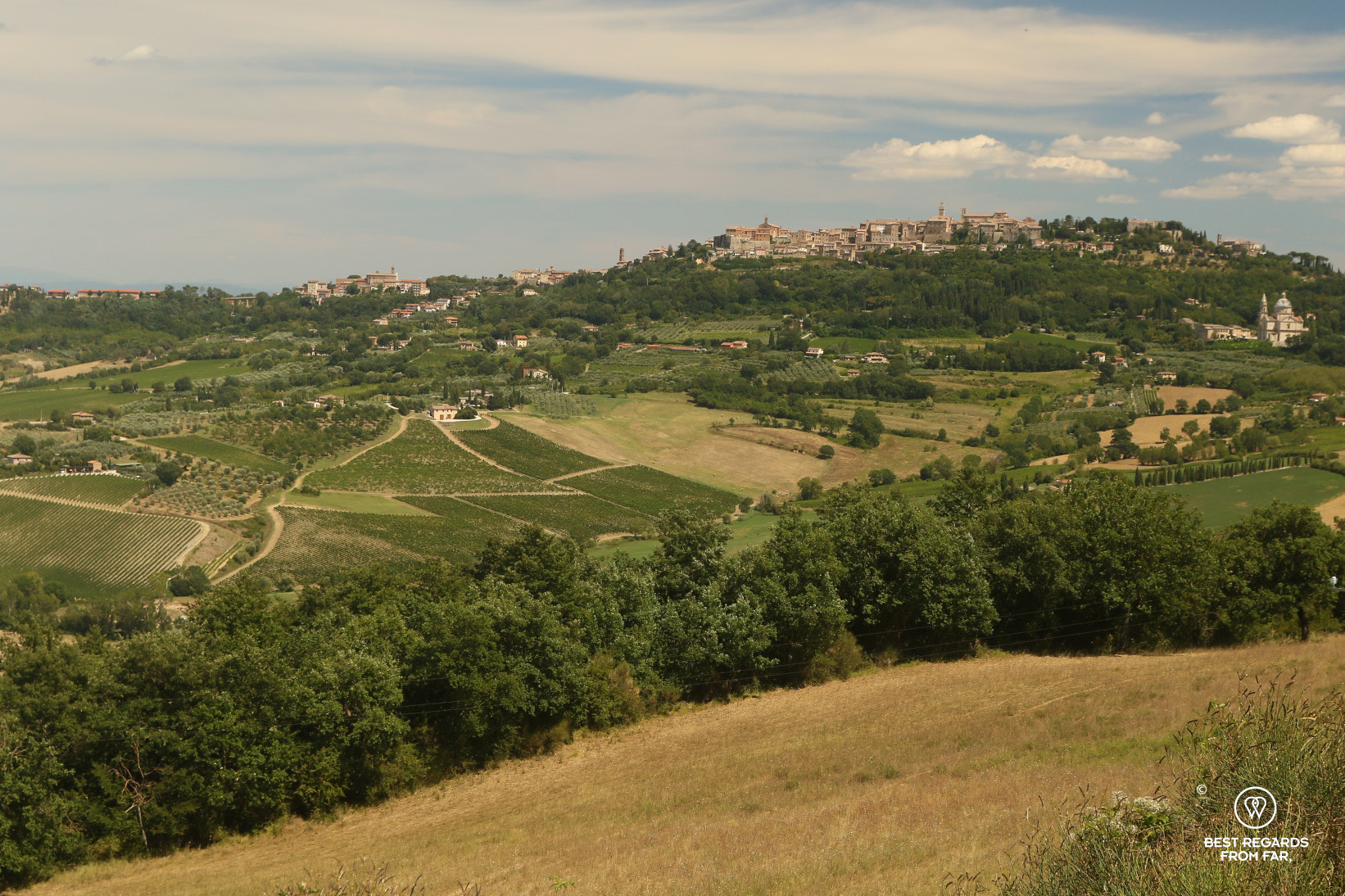



Such is the palace in which the brothers Marco and Carlo Ercolani have been running their family business for more than 3 decades following the footsteps of their grandparents: 20 meters below the street level, an Etruscan tomb dates back to 400 BC. Around it, the extensive wine cellar of the Ercolanis is where their Vino Nobile, Rosso, Vinsanto, and Chianti wines are aged. Large Croatian oak barrels fill the vaulted cellars with their green colmatores on top functioning as expansion valves, an invention of the Tuscan Leonardo Da Vinci. The Ercolanis are passionate in the local terroir and their wine tasting encompasses typical products such as olive oil, cured pork meats, aged sheep cheese, honey, jams, and sweet cantucci biscuits which pair brilliantly with their Vino Liquoroso.
Thermal springs of Bagni San Filippo
From Montepulciano, the road leads through mountains and forests. This part of Tuscany is dotted with natural hot springs that have been used by locals since Etruscan and Roman times when their sulfuric warm waters were already renowned for their healing properties. The influential and powerful Lorenzo de Medici is one of the prominent people that used to bathe here. There is no infrastructure in Bagni San Filippo to enjoy the natural hot spring which consists of multiple warm water pools and cascades in the midst of a forest dominated by impressive white calciferous formations.

L’Abbazia San Salvatore: your stop for the night
The historical centre of L’Abbazia San Salvatore is the perfect stop for the night. The family-run Bed & Breakfast Gli Archi sits in a tastefully renovated mansion from 1850 with a cosy fireplace, and a lovely garden with glorious views over the valley. After a quiet night in this peaceful and off-the-beaten path town, the morning breakfast is a true feast of local products: pecorino cheese and yogurts made close by, finocchiona (the typical fennel sausage from Tuscany), homemade bread and the typical almond and chocolate ricciolina cake will definitely keep us going for the day! Strolling through the historical part of town with its house built of black volcanic stones, we notice the medieval details in the old façades. Just like many pilgrims following the Via Francigena, the route from Canterbury to Rome, we visit the San Salvatore Abbey. With its great strategic location on the hill and its prominent abbey, the sleepy town used to be one of the densest populated cities in all Tuscany in the first half of the 14th century.




Santa Fiora & its terracotta
Yet another picturesque medieval town set in a lush environment thanks to its many natural springs is Santa Fiora. Of the many churches worth visiting, the Pieve delle Sante Flora e Lucilla (early 12th century) has some amazing frescoes and precious terracotta items dating back to the 1400’s, reminding us of the terracotta art in San Vivaldo.

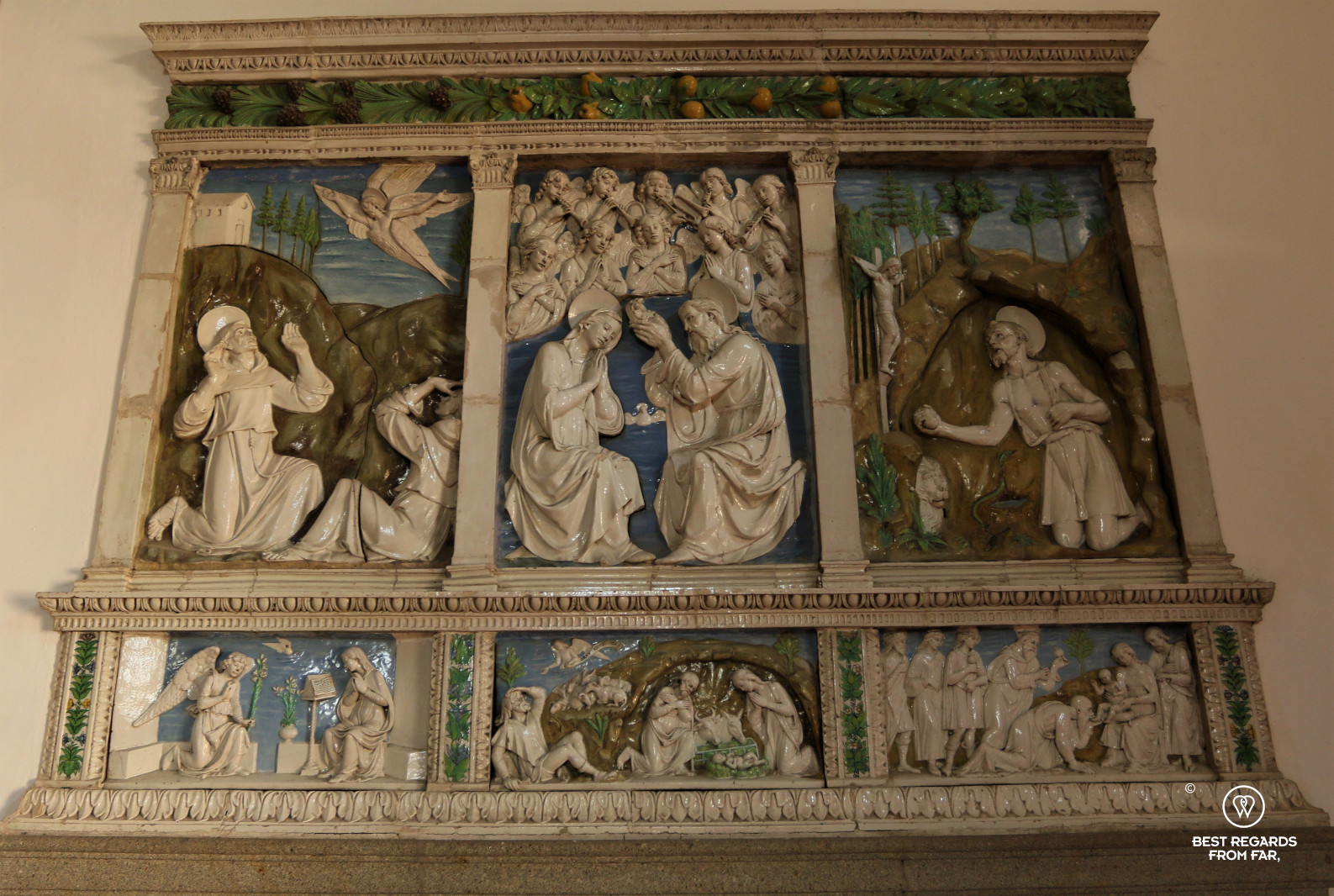

Amiata… Il Vini del Vulcano & their excellent Montecucco D.O.C.G. wines
The road has turned into a beautiful mountain road as we get closer to the fertile grounds of Mount Amiata (1,738-meter, 5,210 ft), an extinct volcano covered in forests of beech and chestnut trees. In their property overlooking the Golden Valley with its patchwork of vineyards and olive groves and dominated by the volcano, the passionate Simone and Stefania Toninelli from Il Vini del Vulcano have worked hard to craft excellent award-winning Montecucco D.O.C.G. red wines. Simone explains: “Thanks to the volcanic properties of the soil, the vineyard’s altitude between 400 and 500 meters above sea level, and the micro climate here in the valley, our Sangiovese grapes can develop to their full potential, releasing all their aromas in the wine, enriching it with minerals and giving it an elegant and soft feel.” Simone pours us a glass of Lavico 2011, that is made 100% of Sangiovese grapes and that has been put in stainless steel for 25 days during the vinification, and then aged and refined in oak barrels for 1.5 years. The love and passion can be tasted in this elegant wine that has won a Medaille d’Or in the 2011 Challenge International du Vin. Simone smiles while he has us taste their Cenere, 100% Sangiovese that has aged in oak barrels for 2 years. Metallic elements in the soil have given this wine made only with the best hand-harvested grapes a refined elegance. The Vini del Vulcano are a well-kept secret by connoisseurs, and visiting is the best way to buy bottles as they hardly get distributed any other way.




After tasting these excellent wines, it is time to leave the mountain behind and to head towards another famous wine area…
Montalcino: Sasso Di Sole’s organic Sangiovese wines
The winding road leads through sunflower fields, wheat fields, along forests and olive groves before a long driveway lined up with the typical cypresses brings us to the domain of Sasso Di Sole. For four generations, the Terzuoli family has mastered the wine making process in a unique location that has the specificity of belonging to two wine districts: the Brunello di Montalcino’ as well as the Orcia D.O.C.’s. They produce a variety of organic wines such as the famous Brunello Di Montalcino, and a surprising sparkling rosé Montalcino made with Sangiovese grapes. All of their wines are D.O.C.G.’s and produced and bottled onsite. The Terzuolis preserve the tradition and their wines are made only with local Sangiovese grapes and aged in large barrels. We walk the production area, fermentation and aging room before tasting their Brunello di Montalcino 2014 that is best aged for 8-10 years. “Do you know how to recognise a 100% Sangiovese wine?” Mr. Terzuoli asks. “You can read through the wine”, he answers after maintaining a short suspense. He takes a glass and puts it on a white card with gold and black letters through which we can indeed read the name of the village of Montalcino, our next stop.


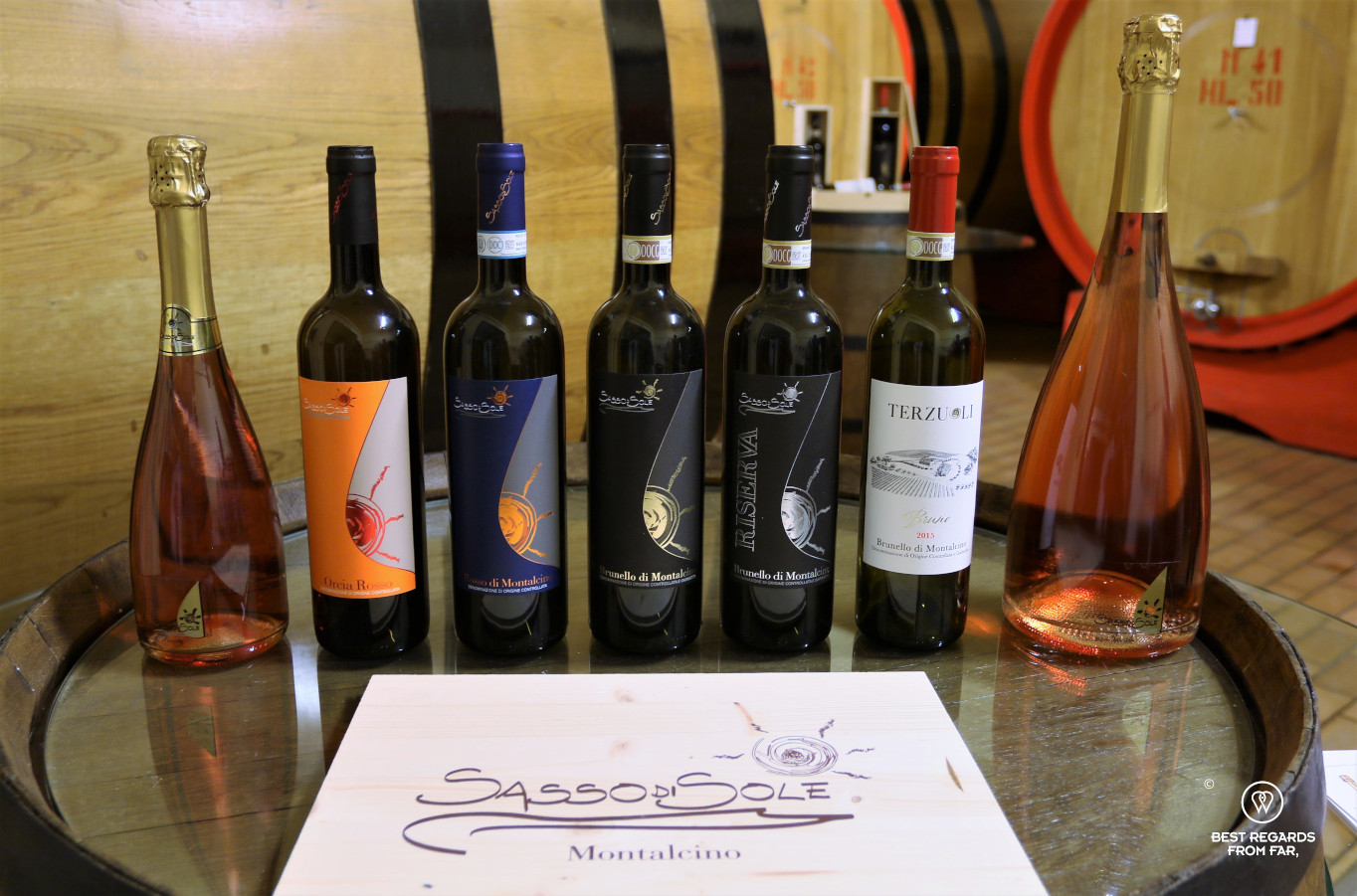

Back to Siena via Montalcino & Buonconvento
The medieval Montalcino provides us with a last sweeping view on Tuscany’s most coveted vineyards. Its fortress, city walls and narrow streets make it another one of these charming villages where the notion of time disappears and we wish we could linger some more. However, the sun is already setting on the vineyards. We hop on the Vespa for the last stretch to Siena past luxurious agriturismos, and the cute village of Buonconvento. Soon, the familiar city walls and towers of Siena reveal themselves on the horizon, and a few kilometres later, we are already driving our scooter into the city of Siena.

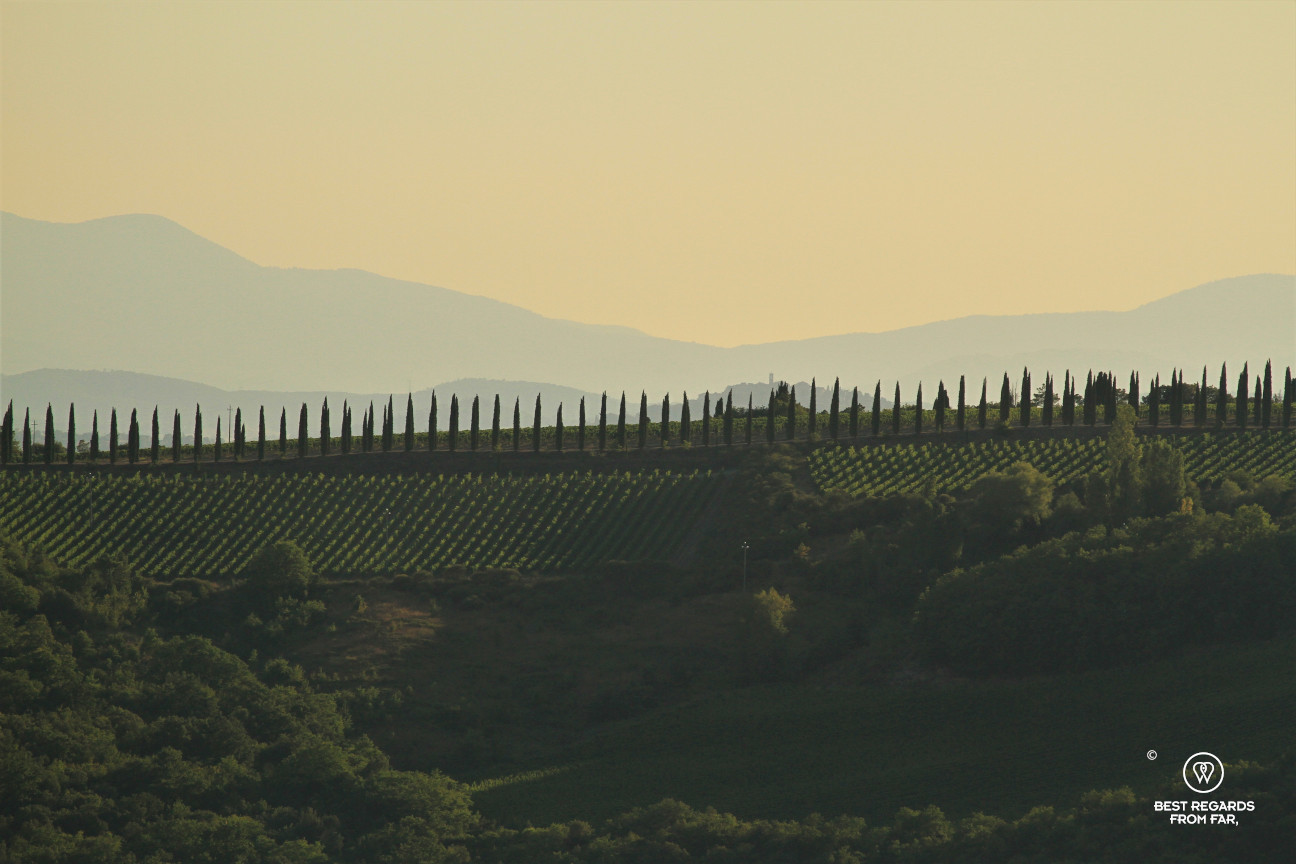



It feels like returning from a long holiday full of new explorations through one of the most enchanting parts of Tuscany, having met passionate producers who innovate to perfect their products while respecting ancient traditions.
Travel tips:
- To live this experience, please refer to Siena Rent to rent a new and reliable scooter (they also rent cars).
- The recommended time for this itinerary is a minimum of two days and it could easily be extended to three.
- Make sure to explore the northern itinerary as well that departs from Siena to discover the Chianti region.
- Check out this interactive map for the specific details to help you plan your trip and more articles and photos (zoom out) about the area! Here is a short tutorial to download it.












This must have been such an amazing trip! I especially love these thermal springs, they look gorgeous. Did you go for a swim? 🙂
What an awesome way to see this part of Italy – sounds amazing. I would love to take time to explore Tuscany. I can’t ride a scooter but maybe a small car would do!
It absolutely is. A small car would do as well even though parking might be a bit tricky at times. The same outfitter we rented the scooter from rents out cars as well 🤗
OMG- this looks so fun. I keep thought about doing a walking tour of the region, but you cover so much more ground on the scooter.
We really love your travel tips. If ever we’re lucky enough to go here, we’ll be referring to your tips, for sure. Stay safe!
Thank you! That’s really nice to hear😊 If you are ever making it to this wonderful part of the world, don’t hesitate to reach out if you want more tips, we’d be happy to advise!